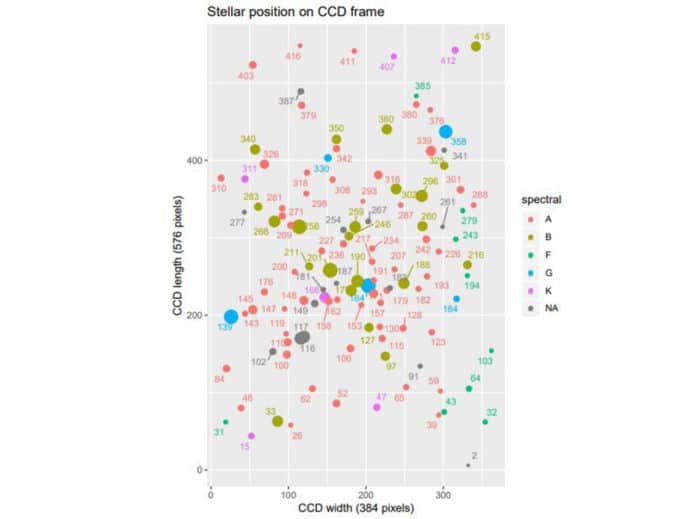Melotte 105 is an open cluster that has not attracted much attention. It is a compact cluster located in the Galactic plane in the direction of Carina.
Recently, scientists conducted a study, where they accurately measurements of the cluster’s distance, age, and metallicity. A team of astronomers led by Timothy Banks of the Nielsen Company took a closer look at Melotte 105, located some 7,200 light-years away in the Galactic plane.
By analyzing archival photometry from the 1m McLellan telescope at Mount John University Observatory in New Zealand and astrometric data from ESA’s Gaia satellite, scientists gained more insights into the nature of this cluster.
Scientists noted, “The Gaia Data Release 2 (DR2) and Vilnius photometric data of the cluster were used to estimate the structural parameters of the cluster, probability of stellar membership in the cluster, the distance modulus, and the cluster age.”
Photometric data show that the reddening of Melotte 105 is 0.34 mag, while its actual distance modulus was seen as 12.9. It was noted that these outcomes contrast from those determined by past investigations. The cluster’s maximum vertical distance from the Galactic plane was calculated to be about 274 light-years, and the eccentricity of its orbit was measured to be 0.042.
Scientists determined that the cluster is about 240 million years old and has a metallicity (Fe/H) at a level of approximately 0.24. Moreover, the outcomes support the idea that the cluster was formed in a metal-rich environment within the sun circle.
When calculating membership probabilities of the 116 candidate stars of Melotte 105, scientists found that 99 of the stars from this sample are most likely the members of this cluster.
Scientists noted, “Shortly the Melotte 105 cluster could be studied via high resolution and high S/N spectroscopic observations. The cluster member stars than could be determined using radial velocity analysis, together with the model atmosphere parameters of the member stars and the mean metal abundance being obtained precisely.”
The research, presented in a paper published December 18 on arXiv.org.
